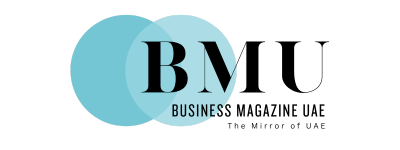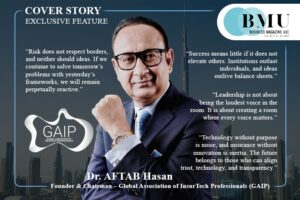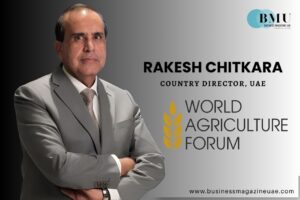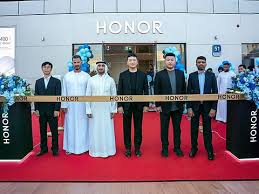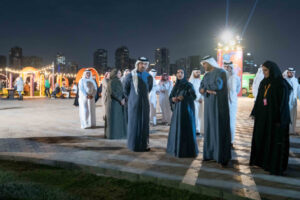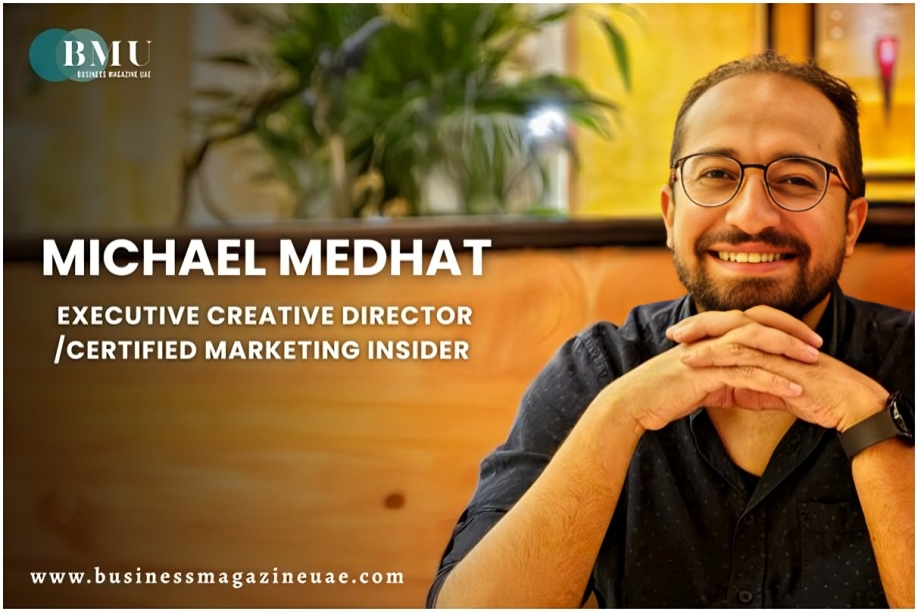
We recently had an insightful conversation with Michael Medhat, an Executive Creative Director and a Certified Marketing Insider. With more than a decade of experience, he brings a unique perspective to the creative direction and marketing strategy landscape. Starting with humble beginnings and moving forward with a passion for driving growth, Michael Medhat has established himself as a renowned figure in the field.
Spark Behind the Journey
We started the interview by asking, “Reflecting on your journey, what inspired you to start in your current industry, and what was a defining moment early in your career?”
Michael Medhat shared, “My journey into this field didn’t begin with a clear vision, it began with a silent longing to create and connect. During my high school in Egypt, I was attracted to building visual concepts during my time serving in church and participating in school activities, and found it profoundly satisfying. Simultaneously, I carried a deep fascination for films and advertisements, as they spoke to me. Being deeply absorbed in how simple stories could move hearts and shape perceptions, I was equally fascinated by the invisible relationships between mechanical parts, and the beauty of systems working together in harmony, thus aspiring to be a mechatronics engineer.
However, life had its own plans as my results closed the door on engineering, leading me to spend time wandering between different fields. It was during my involvement in university student activities that I stumbled upon marketing, and I rediscovered something I had always carried unknowingly: the ability to connect seemingly unrelated ideas and craft meaningful stories. It felt familiar, almost like finding a piece of myself I didn’t know I had lost.”
He even mentioned, “Ironically, my professional journey didn’t start with success. I began as a graphic designer, and honestly, my first ten designs were painful failures, reflecting my own inexperience and misunderstanding of what real creation demands. However, it was a gift in disguise, teaching me a truth many overlook: passion alone is never enough. Growth is built on persistence, humility, and the courage to keep building when no one is clapping.
Another surprising moment I experienced early in my career, as I managed to have my first advertisement published on Ads of the World; that moment felt surreal. It reminded me of a quote from the movie Ratatouille, which says: Not everyone can become a great artist, but a great artist can come from anywhere. At that moment, I saw a reflection of myself in Remy, the little rat — someone who came from unexpected beginnings, yet dared to believe that creativity has no predefined home. This journey has a profound impact on me, teaching me that even the biggest achievements often come quietly.”
Adaptability Amidst Challenges
Throughout one’s career path, challenges are an inevitable part. We asked Michael Medhat to share how he overcame the same.
Michael Medhat explained, “Throughout my career, the nature of the challenges I’ve faced has evolved — from personal to strategic, from proving myself to redefining what value looks like in a changing market. Early on, my greatest challenge was legitimacy. I entered the creative industry without any formal design or advertising background, and I studied the craft deeply, not as a hobbyist, but as a professional with long-term intent. Along the way, I leveraged every transitional skill I had, from marketing theory to stock trading, and merged them into a creative lens that prioritized not only visuals but human psychology, behavior, and decision-making.
As I moved up, the challenge changed from creation to leadership, as I had to prove that I could lead not just projects, but people from multi-disciplinary fields. Regional reality is another big thing with the rapidly evolving Gulf market. There’s a growing appetite for bold, progressive storytelling, yet a parallel need to remain culturally and commercially grounded. In Saudi Arabia, for instance, we’re seeing a surge in youth-focused content, humor, and authenticity, but these need to be crafted within a framework of respect and brand trust, aligning with the unspoken codes. In Egypt, however, the challenge is more structural, with authenticity being the tool of survival. Unless your message feels real, rooted, and human, it simply doesn’t register.”
“The AI wave is perhaps one of the most existential challenges for creative professionals, where it boosts productivity on one hand, while challenging our relevance on the other. Today, it’s not about execution — it’s about interpretation, narrative strategy, and emotional intelligence. I’ve learned that while AI may assist production, only humans can make brands matter. So, I didn’t overcome all of it; rather, I adapted to it, redefining success not as a single breakthrough but as the ability to stay relevant across changing realities. I embedded learning into my rhythm and positioned myself and my teams as interpreters of context. And most of all, I’ve kept one belief at the center of everything: that creativity, at its core, is a tool for meaning, and meaning never goes out of style,” Michael added.
Trends in the industry
We further asked Michael Medhat, “Given the rapid evolution in your industry, what major trends do you see shaping the future, and how is your company preparing for them?”
Michael Medhat mentioned, “One of the biggest realizations I’ve had as a creative leader is that we’re no longer navigating market shifts, we’re navigating market accelerations. In the Gulf, we’re witnessing a structural transformation of the creative industry. Governments are no longer just clients, they’re vision-setters, with a massive push toward localization, IP ownership, and cultural exporting. This means we’re not just adapting global trends, we’re creating our own. But with that comes the demand for agencies and internal teams to elevate their strategic literacy, which requires deeper geopolitical awareness, economic understanding, and a unified creative-analytical thinking model.
A solution I’ve implemented is hybrid creative squads, teams that include not only art directors and copywriters, but also policy readers, economists, and data translators, so we can build emotive and nationally relevant narratives. However, in Egypt, the pressure is different; it’s about consumer uncertainty and saturation. Traditional marketing loses grip unless it’s hyper-personalized and emotionally grounded, so I’ve shifted our model toward micro insight generation, not just big data. As for AI, I see it not just as a tool for speed, but as a pressure test for strategy. AI can generate endless versions that require human leadership.
So we redesigned our internal creative process into three tracks. Firstly, AI for iteration, which is used to accelerate moodboards, naming, and scripting. Then we have humans for curation and context, where brand memory, market nuance, and tone control live. And lastly, executive for orchestration, where I step in to ensure the solution aligns with the business outcome, not just the brief. Organizationally, we’ve also added Innovation Custodians, senior profiles whose only role is to monitor new tools and integrate relevant ones monthly into our actual workflows. That way, innovation doesn’t stay theoretical, it becomes a habit. As the future is a system upgrade, creativity in this new era must be governed as much as it’s inspired.”
Envisioning the Future: Plans We Asked Michael Medhat
To learn Michael Medhat’s goals for his company, we posed the question, “Looking ahead, what are your aspirations for your company, and what strategies are you considering to achieve them?”
Michael Medhat reflected, “My aspiration isn’t to scale the company as it is — but to transform what a creative company can be in this region. I want to build a firm that’s no longer seen as a service provider, but as a market-making force. To achieve this, I’m driving our strategy across three radical shifts:
- From Agency to Creative Infrastructure: We’re moving beyond the traditional agency model into a system of interconnected verticals, including Brand Labs, IP Studios, and Venture Creative Units.
- From Campaigns to Cultural Assets: Shifting our focus from short-term advertising to long-term cultural assets, we’re now investing in talent who understand not just visuals or copy, but ritual design, social anthropology, and emotional storytelling rooted in regional truth.
- From Human Teams to Augmented Creative Systems: We’re also restructuring our workflows to be AI-integrated by design, not by trend. We’re training our people to lead it and to become Creative Technologists, Prompt Architects, and AI Co-pilots.
We’ve also introduced a second operating system, one that’s fast, agile, and experiment-driven, running in parallel to our classic brand track, allowing us to prototype bold ideas without bureaucratic drag. Ultimately, my vision is not to be the biggest, but to be the most irreplaceable; the company that shifts perception, rewires behavior, and redefines the creative role in the economic engine of this region. That’s the future I’m building; something the market hasn’t seen before, and didn’t know it needed.”
Embracing the Digital Transformation
AI and emerging technologies are transforming businesses. So, we asked Michael, “How do you see these changes affecting your industry, and how is your company adapting?”
Michael Medhat shared, “AI and emerging technologies are rewriting the foundations of how creativity itself is generated, measured, and deployed. For years, creativity was seen as the final human stronghold, subjective, intuitive, and unquantifiable. But what we’re witnessing now is the rise of a new model: creativity augmented by data, accelerated by algorithms, and anchored in intelligence.
I see this transformation affecting the creative and communication industry from a different perspective, and we are preparing for the same. We’re moving from static craft to generative systems, including modular campaigns that regenerate based on audience inputs, brand assets that personalize in real time, or even creative content that scales without compromising identity. Today, creative talent doesn’t mean humans only, so we include AI copilots for idea exploration, prompt engineers for visual storytelling, and data interpreters in our team, giving us space to think deeper, not just faster. Moreover, we are prioritizing technological precision over assumptions, while restructuring the company to operate with dual gears, AI-driven and human-refined, both serving innovation and integrity, without compromise.
Additionally, beyond tools, we’re investing in our own intelligence layer, like knowledge graphs, and prompt libraries. Because the future of creativity is not just having AI tools, it’s owning your creative OS, we’re not reacting to the AI wave; we’re architecting our place in it. We’re here to redefine the value of creative intelligence — human and artificial, working in harmony to shape not just messages, but movements.”
Values Guiding Michael Medhat
Intrigued to learn what guides Michael Medhat throughout his career path, we asked, “What guiding principles or core values have you consistently relied on to drive your company’s success?”
“Throughout my leadership journey, I’ve learned that values aren’t just company posters, they’re the invisible rules that shape every decision, every conversation, and every result. For me, a few core principles have remained non-negotiable. Firstly, I believe in a culture of winning, not in the sense of crushing competition, but in showing up every day to be better than yesterday. I even hire people who want to win, and teach them how to win together. Secondly, adaptability isn’t a skill, it’s a survival tool. The market shifts and consumers evolve. We evolve because we must, and I expect my team to embrace change, not react to it.
Another principle I carry with me is that we don’t create for the sake of creativity; rather, we sell with purpose. In our world, creativity is a tool, not an end. Ideas are only as good as the results they drive, and there’s no such thing as a bad idea, just ideas that don’t belong to this brief, this brand, or this moment. I encourage free thought, but I lead with sharp discernment, and that’s how we stay original without losing focus. Moreover, ethics in leadership doesn’t mean softness. You can lead with empathy without losing authority. People don’t follow you unless they trust you, and they won’t trust you unless you trust yourself first.
When it comes to teams, I live by a simple rule: my team never fails in the meeting room. They can be messy, chaotic, even wrong behind closed doors — but out there, I protect them. In the locker room, we challenge each other, and in public, we stand as one. And above all, nothing comes before the purpose. Not ego, preference, or even brilliance. The goal comes first, and everything we do, from ideation to execution, must align with that goal. This clarity is what turns talented individuals into high-performing teams. These values aren’t mere slogans, they’re the way I lead, no matter the company, the market, or the challenge,” Michael explained.
Staying Ahead Of the Curve
We were curious to learn more about Michael’s approach to ensure that his company stands apart from the competition. So, we asked, “Could you share an innovative strategy or approach that has recently helped your company stand out in a competitive market?”
Sharing about his innovative solutions, Michael explained, “One of the most effective, and surprisingly human strategies we’ve developed is what I call — The Creative Sandwich Model. As clients rarely say yes to the boldest idea first, as they need context, security, and choice, we present three creative territories for every major campaign. Firstly, the safe one (bread), which is a solid, traditional execution that speaks their language and checks all the boxes. Secondly, the wild one (the other bread), a daring and unexpected direction that redefines the brief, and earns a reaction. And lastly, the one we believe in (the filling), the concept that balances innovation with strategy; our sweet spot. This way, we give clients a spectrum, and more often than not, they end up choosing the filling. It builds trust, reduces friction, and aligns creative courage with business logic.
But presenting ideas is only one part of the process, execution speed and idea sustainability matter just as much. That’s why we also implemented an internal creative framework we call — The Fridge and The Box. The Fridge is where we keep pre-packaged ideas that can fit a wide range of briefs with minor tweaks. And, the Box is where we store crafted, highly original ideas, usually rough gems from brainstorming sessions. This system allows us to work faster, minimize idea waste, and maximize the lifetime value of our creative thinking.
We’ve transformed our creative pipeline into a dynamic, regenerative system, where no good idea dies, and every client journey is designed to be collaborative, guided, and surprisingly enjoyable. Because in the end, creativity isn’t just about the idea, it’s about how you move people from where they are, to where they never imagined they could go.”
Evolving Leadership Approach
Michael Medhat’s leadership philosophy has evolved over the years, particularly in light of the technological advancements and disruptions in his industry. So, we requested him to share about this evolution as a leader.
Michael Medhat replied, “I’ve come to believe that leadership, at its core, is not about control, it’s about rhythm. A rhythm you build, sustain, and share with your team. In my early leadership days, I led with creative fire and personal conviction. Being passionate, ambitious, and fueled by the urge to prove myself, taught me intensity, but also the limits of individual effort. I made mistakes, stood alone against entire teams and management, not out of ego, but because I believed in the integrity of an idea. And I’ve learned that success isn’t always about being right. One of the most pivotal shifts in my leadership came when I stopped seeing creativity as flashes of brilliance and began understanding it as a system — one that must be fed by clear strategy, oiled with emotional intelligence, and maintained with structure.
With the rise of AI, automation, and accelerated cycles of disruption, systems thinking became critical, and I realized I had to evolve to an orchestrator, someone who aligns vision, talent, and timing with precision. The old way of leadership no longer fits today’s ecosystem. Now, I lead by calibration and believe in tuning teams, processes, and energy until the organization hums. Emotional control, strategic patience, and the ability to pause are no longer soft skills, they’re vital instruments. In the words of the Egyptian film El-Hareef — .الحريف هو اللي يعرف إمتى يبدأ، وإمتى يعافر، وإمتى يقول خالص مش العب.”
Michael further added, “The true player is the one who knows when to start, when to hustle, and when to quit, a reflection of how I lead today. With AI disrupting the creative field, the temptation is to either resist or over-adapt. But leadership in this era isn’t about extremes, knowing when to integrate technology, when to double down on human insight, and when to redesign the game entirely. I no longer build teams based solely on skill, I focus on complementarity, leading to a diversity of thinking, combined with a psychologically safe space.
Summing up my evolved leadership approach, I’d say that skill opens the door, character keeps it open, control slows the rhythm, and clarity speeds it up. Also, AI can write, but only humans can mean. And as the market continues to accelerate, my focus is not just on keeping up, but on designing environments where people, ideas, and innovation can dance together with grace.”
Follow Michael Medhat on LinkedIn.
Also Read :-
A Visionary Growth-Driven Leader in the Business Development Landscape: Khaled Al Rokban
